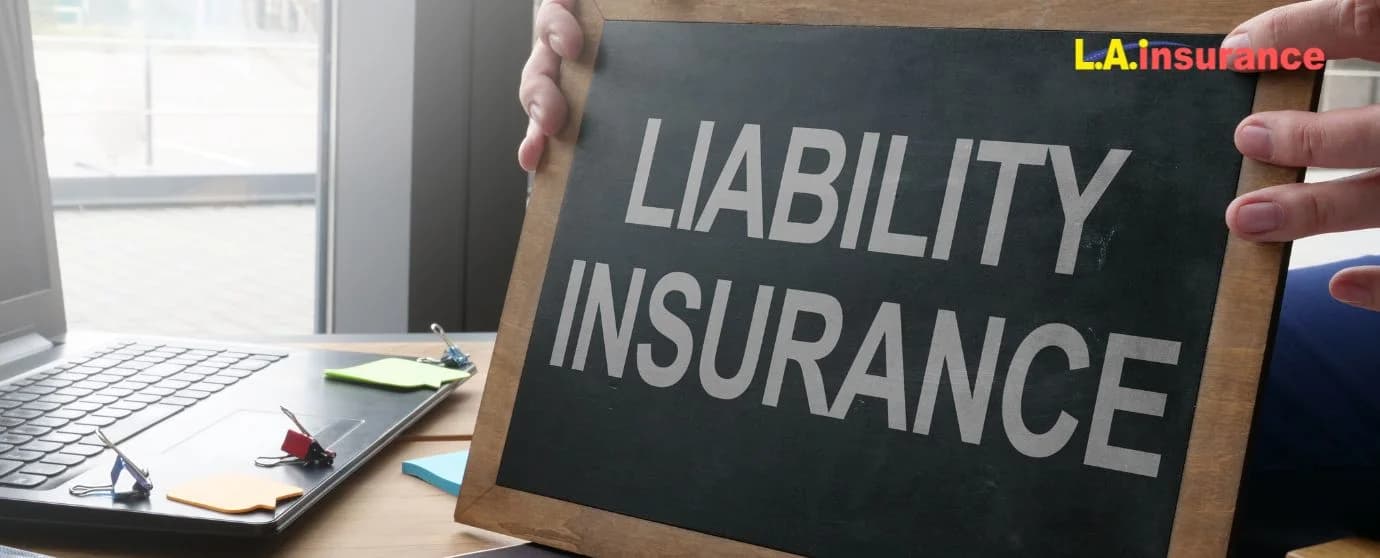
Publish Date: 09-06-2025
Auto Insurance
Last Updated: 18-06-2025
Liability Insurance Vs. Full Coverage Auto Insurance
When it comes to choosing between liability insurance vs. full coverage, you need to understand what they cover, the pros and cons, and cost comparison. Because the coverage choice you make will eventually impact your car insurance rates. Keep reading this article to learn the differences, pros and cons, cost comparison, and when to drop full coverage.
The Differences Between Liability Insurance and Full Coverage Auto Insurance
Liability insurance is mandatory for all drivers in most states, while full coverage isn't. In fact, full coverage isn’t an auto policy at all. Insurers and policyholders use this term to refer to extensive protection that includes multiple coverages. Let's learn about liability insurance and full coverage insurance so you can easily tell the difference between them.
Learn More: Liability Auto Insurance Vs. Collision Insurance
What is Liability Insurance and What It Does and Doesn’t Cover
Liability Insurance is a type of auto insurance that covers bodily injuries and property damage you cause to others in an accident. It does not cover damage to your own vehicle or personal injury. Most states require drivers to carry liability as part of their minimum coverage.
Liability insurance typically includes two main types of coverage:
- Bodily Injury Liability (e.g., covers medical bills, lost wages, and legal expenses for others).
- Property Damage Liability (e.g., pays for repair or replace costs if you damage someone else’s vehicle, home, or property).
Here’s what liability insurance covers for you:
- Medical bills for injured parties
- Lost wages for affected individuals
- Pain and suffering compensation
- Legal fees if sued
- Repair or replace costs for other vehicles
- Property damage (e.g., fences, buildings)
Here’s what liability insurance doesn’t cover:
- Damage to your own vehicle
- Your medical bills
- Personal injury or injuries to your passengers
- Theft, vandalism, or natural disasters
- Rental car reimbursement
- Roadside assistance unless added as additional coverage
Learn more about what liability auto insurance is and what it covers.
What Is Full Coverage Car Insurance?
Full coverage car insurance combines liability insurance with comprehensive and collision coverages to protect both you and your vehicle. It helps cover damages from accidents, theft, vandalism, and natural disasters. Although you’re not obligated to carry it, most lenders require full coverage if you finance or lease a car.
Full coverage typically includes:
- Liability Insurance
- Collision Coverage (Pays for repair or to replace your car after a crash)
- Comprehensive Coverage (Protects against theft, vandalism, flood, and fire)
- Uninsured/underinsured motorists’ coverage (Ask your carrier whether it’s included or not).
Learn more about what collision insurance and comprehensive car insurance are.
Here’s what full coverage insurance covers:
- Accident-related damages to your vehicle
- Bodily injury liability and property damage
- Comprehensive coverage (e.g., fire, theft, natural disasters)
- Collision coverage (e.g., crashes, rollovers)
- Uninsured motorist coverage (If an uninsured driver hits you)
- Medical bills (If personal injury protection is included)
- Roadside assistance (If added)
Here’s what isn’t covered under a full coverage policy:
- Regular maintenance or mechanical failure
- Wear and tear
- Personal injury (unless medical payment or personal injury protection is added)
- Custom modifications
- Rental car reimbursement unless added separately
Liability Auto Insurance Vs. Full Coverage Auto Insurance: Comparison Table
The table below will help you understand the difference between liability and full coverage auto insurance clearly:
Feature | Liability Insurance | Full Coverage Insurance |
Extent of Coverage | Bodily Injury and Property Damage | Covers your vehicle, plus liability insurance for others. |
Legally Required? | Yes, in most states except New Hampshire | No, but often required for leases or loans |
Covers Your Own Vehicle? | No | Yes, through comprehensive and collision coverage |
Covers medical bills? | Only for others if you’re at fault | Yes, if personal injury protection or medical payment coverage is included |
Protection Against Theft, Vandalism, or Natural Disasters? | No | Yes, comprehensive coverage handles these risks |
Cost | Cheaper than full coverage | Higher premium due to broader protection |
Most Suitable For? | Drivers on a budget, owners of older vehicles | New car owners, those who finance or lease, or drivers seeking more protection |
Also Learn: what is the difference between collision and comprehensive insurance?
Pros and Cons of Liability Insurance Vs. Full Coverage Car Insurance
When it comes to choosing between liability insurance and full coverage insurance, there are several factors to consider like your budget, vehicle value, and financial risk tolerance. Below are advantages and disadvantages for both options.
Pros and Cons of Liability Insurance
Pros | Cons |
Cheaper premiums than full coverage auto insurance | Does not cover your vehicle |
Meet legal requirements. Most states require drivers to carry liability as minimum coverage. | No protection from at-fault accidents, collisions, fire, storms, theft, vandalism, or other natural disasters. |
Good for older vehicles | Medical bills for yourself or passengers aren’t included unless you add PIP. |
Sufficient for drivers with savings | Risk of high out of pocket expenses |
Pros and Cons of Full-Coverage Car Insurance
Pros | Cons |
Extensive protection for your vehicle compared to liability-only as it pays for repair after an accident even if you’re at fault. | Full coverage car insurance is more expensive than liability coverage. On average it may cost 100% to 200% more than liability. |
Covers theft, vandalism, and disasters | If your vehicle is old, full coverage may cost more than the car’s value. |
Lenders require full coverage if your car is financed or leased. | You must pay a deductible before your insurance company covers damages. |
Additional coverage options like roadside assistance and rental reimbursement can be included. | Will not cover medical bills if you don’t carry medical payment coverage (MedPay) or Personal Injury Protection. |
Cost Comparison Between Auto Liability Vs. Full Coverage Insurance
The liability insurance costs much cheaper than full coverage car insurance. Because liability insurance doesn’t provide extensive protection like full coverage does.
It’s difficult to say the exact cost of auto insurance for any coverage as it may vary from person to person depending on their location, vehicle’s value, state laws, coverage type, driving record, age, and so on.
On average, liability insurance costs around $828 per year ($69 per month), while full coverage car insurance is approximately $2100 per year ($175 per month). However, costs can vary significantly depending on the state, insurance company, and policy details.
To learn more about minimum liability insurance costs vs. full coverage costs, read our article on how much is car insurance.
Average Auto Insurance Costs Comparison by State for Liability and Full Coverage
The cost of liability insurance and full coverage auto insurance differs across the states due to laws, accident rates, and vehicle insurance regulations. The following shows the costs of a few states for liability insurance and full coverage auto insurance:
State | Liability Coverage Cost Per Year | Full Coverage Cost Per Year |
Michigan | $984 - $1,596 | $2,640 - $4,067 |
Colorado | $587 - $972 | $2,892 - $3,210 |
Florida | $1,116 - $1,212 | $3,264 - $4,140 |
Texas | $724 - $804 | $2,172 - $2,572 |
Arizona | $817 - $1,092 | $2,616 - $2,754 |
Georgia | $960 - $1,041 | $2,196 - $2,948 |
Nevada | $1,152 - $1,560 | $3,432 - $3,616 |
North Carolina | $607 - $828 | $1,668 - $2,007 |
New York | $799 - $1,691 | $2,280 - $3,967 |
Factors That Affect the Cost of Liability and Full Coverage Insurance
Several factors can influence how much insurance companies charge for liability coverage and full coverage insurance. Let’s say you drive an expensive vehicle produced by Lamborghini. In such a case, your car insurance rate will go up as the car’s make and model is a crucial factor affecting your insurance rate.
Your liability or full coverage cost can also be cheaper or expensive depending on how responsible a driver you are. If you have a good driving history, you’re likely to enjoy lower rates. In contrast, if you have records of accidents, speeding tickets, or DUI on your driving license, you will face higher rates for both minimum and full coverage insurance.
In many states, credit score also affects the cost of auto insurance. A lower credit score can help you get a cheaper car insurance quote. Because insurers see an excellent credit holder as a more financially responsible consumer who can pay the premium or deductible on time.
Age also impacts your rate. If you’re a younger driver, you’re statistically considered a high-risk driver to insurance companies. Because they are less experienced and tend to be involved in accidents more often than mature drivers. That’s why you may find young drivers paying some of the highest rates for auto insurance. For instance, in Michigan, an 18-year-old driver pays roughly $8,732 for full coverage car insurance, which is 176% higher than the state average.
Although it’s prohibited in many states, your rates may still be affected by gender. Statistics show that men are usually involved in risky driving behaviours compared to women. Some insurers might consider this data and charge a little bit higher rate for you.
Additionally, your annual mileage, location, zip code, and crime rate, particularly the theft rate, can all play a role in determining your car insurance rates. Whether you choose liability coverage or full coverage, these factors will influence the cost of your car insurance.
Full Coverage Vs. Liability Auto Insurance: Which One to Choose?
Whether you should choose liability coverage or full coverage depends on your vehicle’s value, budget, and your needs. If you own an older vehicle or want lower premiums, liability-only car insurance is the cheaper option. However, if your vehicle is new and expensive, financed or leased, you should look for affordable full coverage auto insurance.
Here's when you should choose liability-only insurance:
- Your vehicle is older and has a low market value.
- You can afford to repair or replace your car out of pocket.
- You’re on a tight budget and need lower car insurance costs.
- Your state’s minimum liability coverage meets your needs.
Here’s when you should choose full coverage insurance:
- Your car is new, financed, or leased, and lenders require full coverage.
- You need protection against accidents, vandalism, theft, or natural disaster.
- You drive in high-risk areas where accidents or car theft commonly occur.
- You cannot afford to replace your car if it’s totaled.
Liability Coverage Vs. Full Coverage Car Insurance: When to Drop?
You cannot drop liability-only coverage as long as you drive a car. However, if you’re a resident of New Hampshire state, you don’t need to carry any type of car insurance coverage. Yet you do have to show proof of financial ability to pay for damage if an accident occurs.
In case of full coverage, you can drop it if the costs outweigh its benefits. Here’s when to drop full coverage:
- Your car’s value is less than four to six times the annual full coverage cost.
- You own the car outright and don’t have a loan or lease.
- You have enough savings to repair or replace your vehicle if needed.
On the contrary, if your car is worth more than the total annual premium or if you drive in areas with high accident or theft rates, you should keep full coverage insurance. Also, if you feel like you don’t have enough cash to cover major repairs, you better continue keeping your full coverage policy.
Related Article: When to Drop Collision Insurance?
Wrapping Up
Deciding between liability insurance and full coverage auto insurance depends on financial situation, vehicle’s actual cash value, and other risk factors. Liability coverage is mandatory as well as a cheaper option. However, full coverage provides greater protection but costs you more money. If your car is old, we recommend considering liability-only car insurance. If you own a high-value vehicle or if your vehicle is leased or financed, pick full coverage. Before you make a decision, asses your policy, state laws, coverage limit, deductible, and insurance needs.
If you have a tight budget but still want to get full coverage, you should look for an affordable insurance agency. L.A. Insurance, based in Detroit, MI, offers the most reliable car insurance policy for you, even if you’re a high-risk driver. Find an agent or dial us at (800) 893-9393 for general inquiries.
Frequently Asked Questions (FAQs)
When should you get liability-only car insurance?
You should choose liability-only car insurance if your vehicle is older, has low market value, and you can afford repairs. It’s also ideal for budget-conscious drivers who don’t need comprehensive and collision coverage.
Does full coverage cover liability insurance?
Yes, full coverage auto insurance includes liability insurance, which covers bodily injuries and property damage to others. It also adds comprehensive coverage and collision coverage to protect your own vehicle from accidents, theft, or natural disasters.
What happens if my car gets totaled and I only have liability insurance?
If you have liability-only car insurance, your insurance company won’t pay to repair or replace your vehicle. You’ll need to cover all costs out of pocket unless the at-fault driver has insurance to compensate you.
Is liability insurance cheaper than full coverage insurance?
Yes, liability coverage is significantly cheaper than full coverage car insurance because it only pays for damage to others. Full coverage costs more as it offers more protection under comprehensive and collision coverage.
How much liability insurance do I need?
Most states require drivers to carry liability limits 25/50/25, which means $25,000 for bodily injury per person, $50,000 for bodily injury per accident, and $25,000 for property damage per accident. Each state has different requirements. If you choose higher policy limits, it offer better protection. Consider coverage that fully protects your assets if you cause a serious accident. Check your state’s minimum coverage requirements.
Do I have to pay deductible for liability insurance?
No, liability insurance does not require a deductible. Your insurance company pays for damages, bodily injuries, and pain or suffering you inflicted on others, up to your policy limits. In case the damage exceeds your coverage limit, you have to pay the rest of the amount out of pocket.
Do I need to pay deductible for full coverage auto insurance?
Yes, with full coverage auto insurance, you’ll pay a deductible when using comprehensive or collision coverage. This out-of-pocket expense applies before your insurance company covers vehicle repairs or replacement.
Tag :
Auto insurance
Comercial Auto








